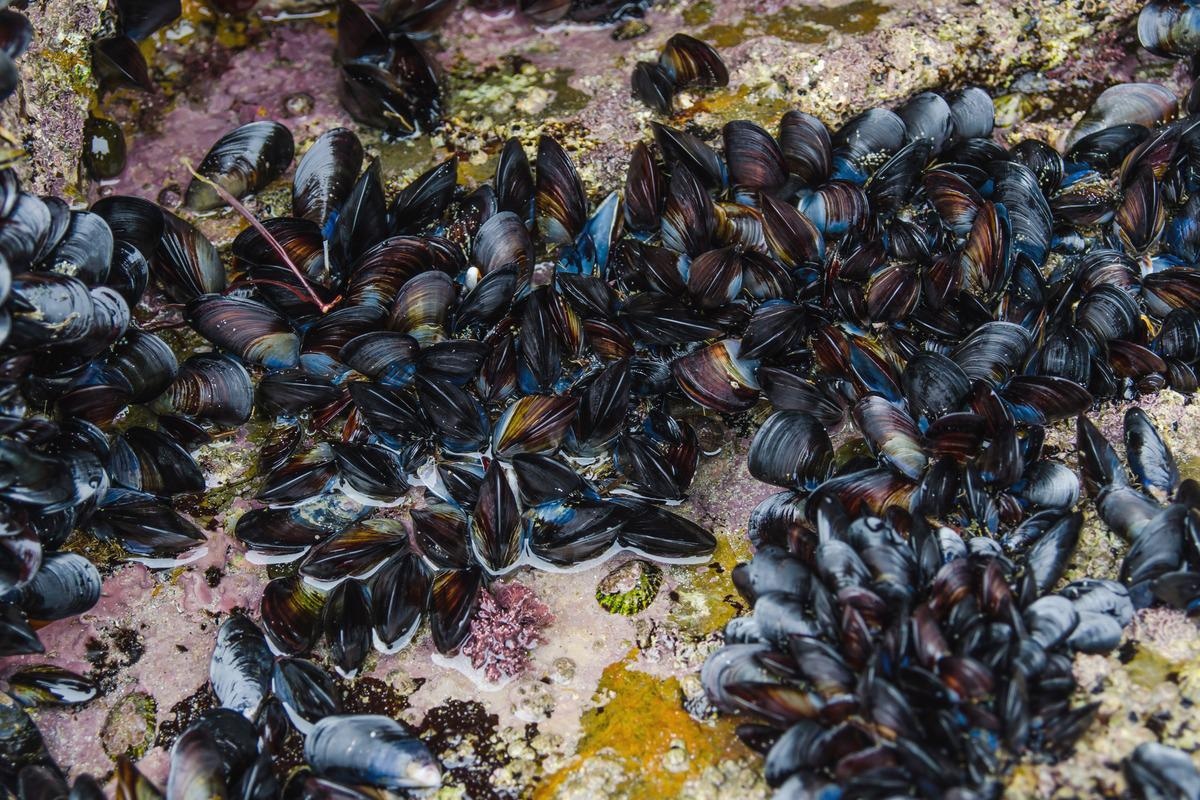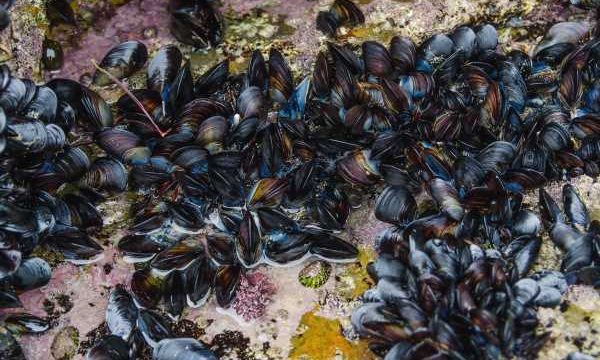The emergence and global dissemination of severe acute respiratory syndrome coronavirus 2 (SARS-CoV-2), the virus that caused the coronavirus disease 2019 (COVID-19) pandemic, presents a huge challenge to global health strategies. After Severe Acute Respiratory Syndrome (SARS) and Middle East Respiratory Syndrome (MERS), SARS-CoV-2 is considered the third significant coronavirus outbreak in the previous 20 years.
 Study: Detection of SARS-CoV-2 RNA in Bivalve Mollusks by Droplet Digital RT-PCR (dd RT-PCR). Image Credit: Alfonso de Tomas/Shutterstock
Study: Detection of SARS-CoV-2 RNA in Bivalve Mollusks by Droplet Digital RT-PCR (dd RT-PCR). Image Credit: Alfonso de Tomas/Shutterstock
Coronaviruses (CoVs) are a genus of enveloped viruses that mostly cause infections of the respiratory and gastrointestinal tracts. Most people who have COVID-19 have respiratory symptoms, while 18% have gastrointestinal symptoms. Virus RNA has been found in the stools of COVID-19 patients in percentages ranging from 16.5% to 100% in some studies.
Bivalve shellfish are filter-feeding creatures that are easily contaminated by human infections in municipal sewage-affected waters. Since the late 19th and early 20th centuries, the link between sewage pollution and shellfish-transmitted infectious illnesses has been widely documented. Oysters, clams, and cockles, among other bivalve shellfish, are major vectors for viral enteric infections. The dangers of eating raw or partially cooked shellfish are greater. Relaying and depuration techniques, which include immersing shellfish in clean water for varying amounts of time after harvesting from their production locations, are routinely employed to minimize the number of fecal bacteria in shellfish; however, they do not effectively eradicate viruses.
The reverse transcription-polymerase chain reaction (RT-PCR) has emerged as the principal method of diagnosing SARS-CoV-2 infection, and a variety of molecular targets, including those coding for the nucleocapsid (N), membrane protein (M), envelope (E), and spike (S), have been identified. Other structural proteins that can be used for COVID-19 diagnosis include open reading frames ORF1a and ORF1b and RNA-dependent RNA polymerase (RdRp).
The false-negative rate of real-time RT-PCR-based assays has been reported to be as high as 20% in clinical practice. The goal of the current study, published in Int. J. Environ. Res. Public Health, was to collect data on the prevalence of SARS-CoV-2 in bivalve mollusks (Mytilus galloprovincialis) harvested in the Campania region (Southern Italy) using dd RT-PCR for the detection of low levels of virus in mollusk tissues.
The study
All of the samples that were examined passed the quality assurance standards. SARS-CoV-2 RNA was found in 19 of the 179 samples examined by the dd RT-PCR method in bivalve mollusks collected between September 2019 and April 2021 from the coastal area of the province of Naples (Italy). Amplification of the Orf1b nsp14 area was seen in 11 out of 20 samples, amplification of the RdRp target was seen in 10 out of 20 samples, and amplification of the E target was seen in 4 out of 20 samples; no samples revealed amplification of the N gene.
Overall, one sample tested positive for the virus across all PCR targets, three tested positive for the RdRp and E genes, one tested positive for the Orf1b nsp 14 and the RdRp gene, and 14 samples tested positive for one target only. The real-time RT-PCR assay, which targeted two N gene sites, yielded positive results in 11/179 samples, all with Ct values greater than 35. Only three of these samples matched dd RT-PCR-positive samples. The presence of SARS-CoV-2 was detected in 27/179 samples after merging data from dd RT-PCR and real-time RT-PCR analyses.
Positive samples were gathered from seven bivalve mollusk farms in the Gulf of Naples area; other positive results were linked to bivalve shellfish harvested illegally in non-authorized areas of unknown origin. The production locations with the highest number of positive samples were found along the northern and central coasts of Campania. Nine out of twenty-seven positive samples came from the 'Varcaturo' site, 4 out of 27 from the 'Rada Santa Lucia' site, and 4 out of 27 from the 'Bacoli' site. In February 2021, a farm in the 'Monte di Procida' site collected the sample with the highest virus concentration by dd RT-PCR of the RdRp gene.
Amplification of the SARS-CoV-2 partial spike area was achieved in 5 of the 27 examined samples: sample IDs 118, 119, 177, and 178 were positive by PCR 973, sample ID 101 by PCR 975, and no amplification was obtained with PCR 980. Between January and April of 2021, all amplified samples were collected. Samples 118, 119, 177, and 178 (aa 58–150 of the spike gene) had 100% identity to the relevant area of prototype sequence NC_045512 (Wuhan strain) when sequenced.
Implications
This is the first study to characterize SARS-CoV-2 in bivalve mussels at the molecular level and to describe the discovery of mutations associated with a variation of concern. This work shows that SARS-CoV-2 can bioaccumulate in bivalve mollusks to levels detectable by droplet digital RT-PCR or real-time RT-PCR. The detection rate varies over time in relation to viral shedding in increasing waters. Furthermore, positive shellfish samples can be sequenced for molecular characterization and variant identification of SARS-CoV-2. As a result, bivalve mollusks could be an interesting way to follow SARS-CoV-2 propagation in aquatic bodies, as well as a useful way to track outbreak patterns and viral diversity.
-
Mancusi, A. et al. (2022) "Detection of SARS-CoV-2 RNA in Bivalve Mollusks by Droplet Digital RT-PCR (dd RT-PCR)", International Journal of Environmental Research and Public Health, 19(2), p. 943. doi: 10.3390/ijerph19020943. https://www.mdpi.com/1660-4601/19/2/943
Posted in: Medical Science News | Medical Research News | Disease/Infection News
Tags: Assay, Bacteria, Coronavirus, Coronavirus Disease COVID-19, covid-19, CT, Gene, Genes, Global Health, Membrane, Pandemic, Pollution, Polymerase, Polymerase Chain Reaction, Propagation, Protein, Public Health, Respiratory, RNA, SARS, SARS-CoV-2, Severe Acute Respiratory, Severe Acute Respiratory Syndrome, Syndrome, Transcription, Virus
.jpg)
Written by
Colin Lightfoot
Colin graduated from the University of Chester with a B.Sc. in Biomedical Science in 2020. Since completing his undergraduate degree, he worked for NHS England as an Associate Practitioner, responsible for testing inpatients for COVID-19 on admission.
Source: Read Full Article
